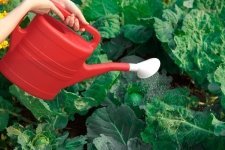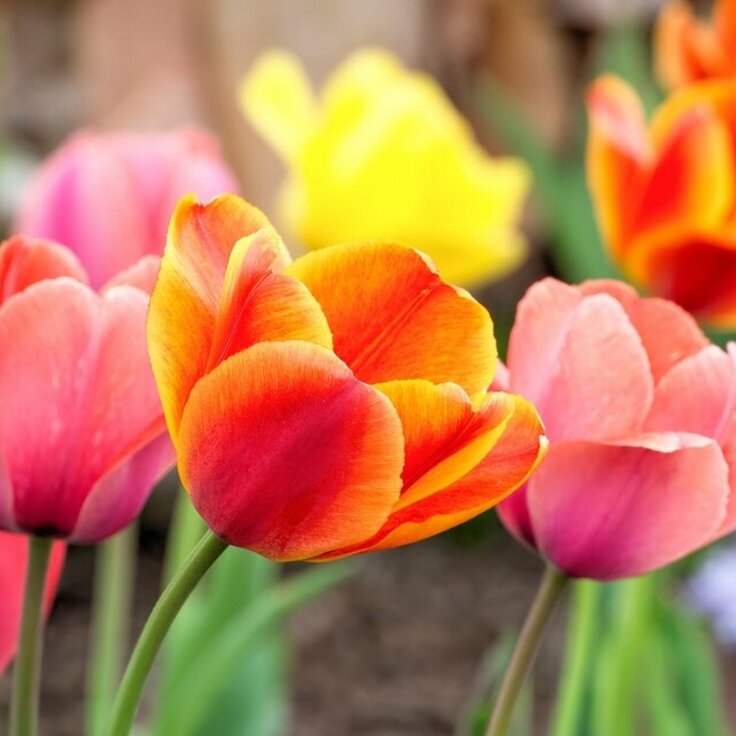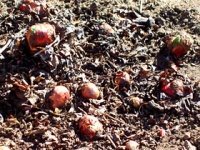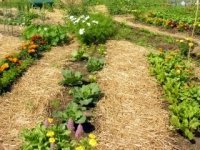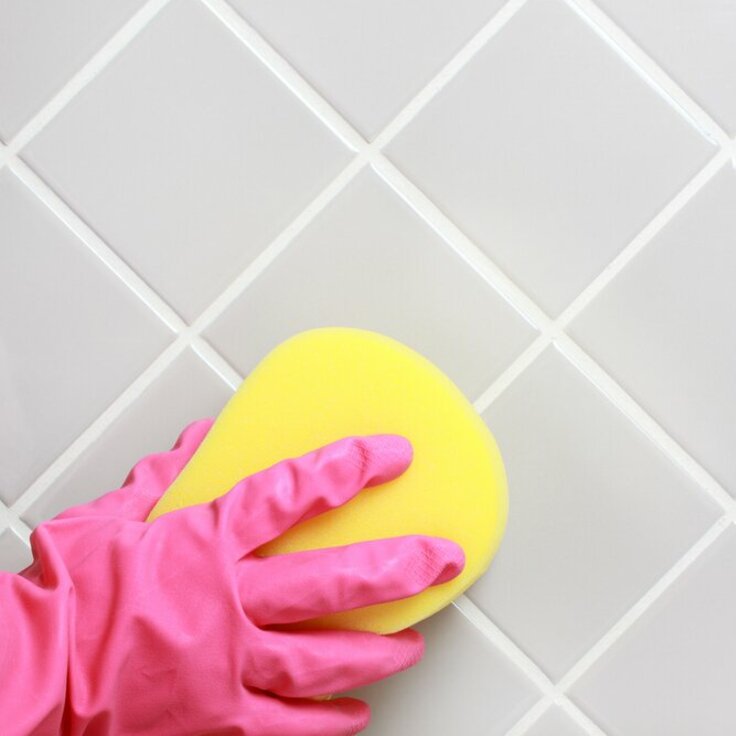Spring Vegetable Gardening
Spring vegetable gardening season is upon us! Wise gardeners know that careful preparation and timely action are key ingredients for improving your chances of a bountiful harvest later.
About the Soil
Soil preparation is one of the most neglected yet most important gardening chores. A soil test will tell you the actual fertility level and what nutrients are needed. If you can't test your soil before planting your spring garden, apply 1 lb. of a fertilizer with a 3-1-2 ratio of nutrients per 100 square feet and mix it into the soil. Then raise your hand and solemnly promise to do a soil test prior to the fall gardening season because guessing isn't good enough!
Many of our soils lack good drainage. You can make raised beds by "hilling up" rows of soil or by building borders with stone, concrete cinder blocks, or other materials, which are then filled with a good planting mix. Beds should be a minimum of 6 inches high (10 is even better, if your chiropractor is good!). Four feet is a manageable width. This is narrow enough to reach to the center from either side, yet wide enough to avoid wasting space with too much walkway area.
Mulch heavily between beds with leaves, straw, or other organic materials. This will help keep your garden accessible in all weather and hold down weeds in the walkways. At the end of the season, the walkway materials will be largely decomposed and the leaf mold can be mixed into the planting beds to build the soil. Then refill the walkways with next fall's leaves.
Last of the Cool Crops
We are nearing the end of the season for planting cool-season veggies. There is still time to get in seeds of lettuce, spinach, beets, Swiss chard, carrots, peas (snap, English, and snow), radishes, and turnips. We also can set out transplants of broccoli, cabbage, cauliflower, Chinese cabbage, collards, kohlrabi, and parsley now. It is a little late to set out onion sets and still have them develop good size bulbs, but you can grow some green onions out of the sets.
For some great new potatoes this spring, cut the tubers into pieces with one eye each. Dust the cut surfaces with sulfur and set them on a wire screen to "heal over" for a few days. This reduces losses from fresh cut potatoes decaying in the soil.
Wait on Warmth Lovers or Start Indoors
Warm-season veggies like beans, squash, tomatoes, and peppers will need to wait until after the average last frost date, which is anywhere from early to late March, depending on your location. If you want to get an early start, sow these crops indoors (except beans). Another option is to provide plants with some protection by fashioning a mini greenhouse structure.
Use sections of stiff fencing wire to form a quonset-style support tunnel over the planting row. Cover this with clear plastic secured with soil along the edges. Place milk jugs of water beside each tomato plant to serve as "heat sinks" on cold nights. Be ready to open the ends of the plastic tunnels on sunny days to allow heat to escape.
New transplants respond well to a dose of liquid fertilizer. Synthetic soluble fertilizers, or natural ones like fish emulsion and seaweed, provide a quick start for young transplants. Mix according to label instructions and give each transplant a cup or two of solution at planting time and again a week later. Avoid the temptation to mix the solution stronger than the label directs.
Read more from the National Gardening Association.


